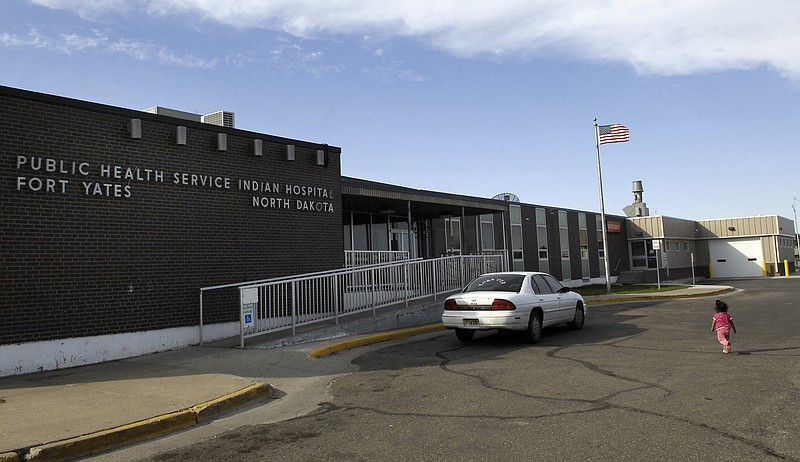FLAGSTAFF, Ariz. (AP) — U.S. government hospitals put Native American patients at increased risk for opioid abuse and overdoses, failing to follow their own protocols for prescribing and dispensing the drugs, according to a federal audit made public Monday.
The report by the U.S. Department of Health and Human Services’ Office of Inspector General does not say whether patients suffered because of the hospitals’ practices. However, all five Indian Health Service hospitals that were reviewed had patients who were given opioids in amounts exceeding federal guidelines, the report said.
“There are vulnerabilities with this particular population in the opioid prescribing and dispensing practices,” said Carla Lewis, one of the auditors.
The overdose epidemic that has killed more people than any other drug epidemic in U.S. history has hit indigenous communities hard. Native Americans and Alaska Natives had the second-highest rate of opioid overdose out of all U.S. racial and ethnic groups in 2017, according to the federal Centers for Disease Control and Prevention.
Navajo Nation President Jonathan Nez called the audit’s findings “very concerning” and said the tribe plans to reach out to its congressional members and the Indian Health Service to ensure the recommendations are addressed.
The report made more than a dozen recommendations to the Indian Health Service to better track patients’ health records and pain management, ensure opioids are stored under tighter security and update its information technology systems. The agency agreed on every point and said changes are coming.
The Indian Health Service, the federal agency that administers primary health care for Native Americans, has put an increased focus on opioids lately with a new website and the creation of a committee focused on decreasing overdose deaths, promoting culturally appropriate treatments and ensuring that communities know how to respond.
The audit covered five of the 25 hospitals directly run by the Indian Health Service: the Phoenix Indian Medical Center in Phoenix; Northern Navajo Medical Center on the Navajo Nation in Shiprock, New Mexico; the Lawton Indian Hospital in Lawton, Oklahoma; the Cass Lake Indian Hospital on the Leech Lake reservation in Cass Lake, Minnesota; and the Fort Yates Hospital on the Standing Rock Sioux reservation in Fort Yates, North Dakota.
Auditors considered the amount of opioids each hospital dispensed and the percentage increase over three years when deciding which ones to review. They looked at 30 patient records at each hospital, visited the facilities and interviewed staff.
The auditors found the hospitals strayed from guidelines in the Indian Health Manual in reviewing treatment for patients and their causes of pain every three months. Patients also must sign a written consent form and an agreement to treat chronic pain with opioids so they know the risks and benefits, as well as the requirement for drug screenings. More than 100 patient records did not include evidence of informed consent, and dozens did not have evidence that providers adequately educated patients.
The Centers for Disease Control recommends that patients be prescribed no more than 90 morphine milligram equivalents per day, a measure used to compare an opioid dose with morphine.
The audit found each hospital met or exceeded that amount at times. At the Shiprock hospital, the daily dosage was more than four times as high. The auditors also found some patients were prescribed opioids and benzodiazepines — commonly used to treat anxiety and insomnia —at the same time, which “puts patients at a greater risk of a potentially fatal overdose.”
The Indian Health Service said all of its facilities now submit that data so the agency’s top leadership can track it.

